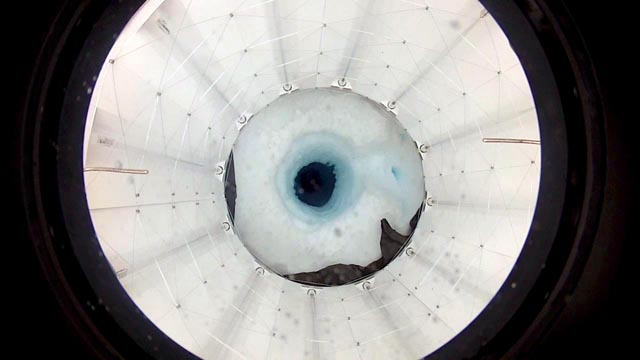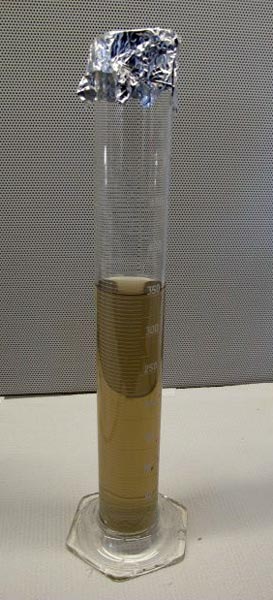|
Life under the iceWISSARD team discovers evidence that bacteria live in Lake WhillansPosted February 8, 2013
It’s life. But is it life as we know it? Previous coverage That question will be answered in the months ahead, but it appears that the first evidence that something lives in a lake covered by nearly a kilometer of ice in West Antarctica emerged at the end of January. Scientists analyzed the first samples of water only hours after bottles containing the cloudy lake liquid had been winched to the surface on Jan. 29. Doug Fox, a journalist embedded with the Whillans Ice Stream Subglacial Access Research Drilling (WISSARD) In a field report dated Jan. 29, the science team had written that “respiratory enzymatic assays have provided the first evidence that the lake water microorganisms we observed with microscopy are viable.” 
Photo Credit: Alberto Behar, JPL/ASU; underwater camera funded by NSF/NASA
The borehole as viewed through the germicidal UV collar that helps prevent contamination of the subglacial environment in order to recover clean samples from subglacial Lake Whillans. The collar is about 1.5 meters across.
Further experiments were planned at the U.S. Antarctic Program’s McMurdo Station Fox cautioned in his report that additional tests will be needed to show that the cells actually grow because “dead cells can sometimes show up under a microscope with DNA-sensitive staining. And weeks or months will pass before it is known whether these cells represent known types of microbes, or something never seen before.” The exploration of the subglacial lake, one of nearly 400 known to exist under Antarctica’s massive ice sheets, may provide new insights into how life exists in extreme environments. Scientists are also studying the subglacial system, located about 800 meters under the ice sheet, to learn how water below influences glacial movement. And sediment samples from the lake floor could provide details about the geologic and climactic history of the region. 
Photo Credit: WISSARD
A first glance at the waters of Subglacial Lake Whillans. The light brown color is due to suspended particles in the water.
Scientists and drillers operating a custom-made hotwater drill worked around the clock for four days to recover water and sediment samples from subglacial Lake Whillans. The effort was the culmination of a decade of international and national planning. It had taken more than three years to plan and execute the WISSARD project itself with more than $10 million in grants from the National Science Foundation “We were able to address almost all of our science goals for the season,” the team wrote in its final field report on Feb. 1. “The data and samples collected have provided us with a glimpse of the Antarctic subglacial world. We have no doubts that our results will transform the way we view Antarctica and pave the way for future national and international subglacial research efforts.” NSF-funded research in this story: John Priscu, Mark Skidmore and Andrew Mitchel, Montana State University, Award No. 0838933 |



For USAP Participants |
For The Public |
For Researchers and EducatorsContact UsU.S. National Science FoundationOffice of Polar Programs Geosciences Directorate 2415 Eisenhower Avenue, Suite W7100 Alexandria, VA 22314 Sign up for the NSF Office of Polar Programs newsletter and events. Feedback Form |


